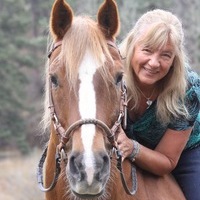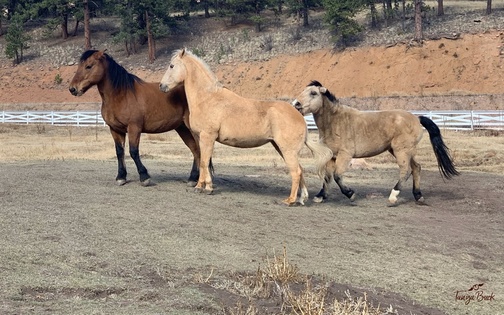
The Most Popular Horse Breeds Of 2019
Equestrian Advice & Guides General Equestrian
Build your business profile for FREE and expose your services to thousands of potential clients!
Create my profile now!
The best day and the most stressful day can be one and the same when you bring your new horse home. How do we introduce a new horse into an established herd, or even just to one other?
It seems not to matter if you have a herd of one or five living together happily at home, bringing the new one in can cause all kinds of unexpected havoc. We worry over the best way to make the introductions and hope no unexpected veterinary expenses are incurred. The good news is that the entire process can be made simple, easy and fun…most of the time.
Step one: Quarantine!
Prepare everyone for the new arrival by designating a quarantine area that is near enough for the horses to see and hear each other, but far enough away that they can’t transmit any disease. This means no shared water, feed, or buckets. Get the new horse his own set of tack from halter and lead to his own buckets, blankets and brushes. I like to keep them at least forty feet apart, but more is better if your set up allows. Ideally, you want the quarantine to last a month, but in all honesty, I usually cave at the two-week mark. Shh, don’t tell!
Step two: Lessen the distance between them.
For this step, you’ll find that having an extra person there to help will settle your anxiety as well as adding an extra set of hands if needed. Be sure both horses have no halters on and that there are no sharp nails, screws, eye hooks, etc., that they may get cut on.
Remember, when horses meet, they sniff noses, then will often strike with a front foot, squeal, wheel and kick at the other horse, so be sure no feet can get hung up on fencing.
When the day arrives to put the horses close enough to touch noses, there are some things we can do to minimize the hazards.
Step three: Put them together.
Some folks just off-load the new guy and turn him loose with the existing herd. This can work, or it can backfire at huge expense to life, limb and financial resources, so if you feel it’s worth any outcome, but remember that horses need a lot of space to get away from each other.
Strong fencing, good footing and no halters to get hung up on are all essential.
Introducing a new horse to a small herd:
Whether you have quarantined, fenced apart or not, once the horses are ready to be put together, be sure the area you do this in is large. The bigger the space, the better the integration goes. If it’s a small herd and a large area, the new guy can always get away, and if he’s the one wanting to pick a fight, your horses have room to keep themselves safe.
If you have a herd of three or more, and have not just thrown them together, introduce them gradually. I like starting with the middle horse, the one in my herd that is not best friends with the lead horse, but not the one that always seems to be running away from the others.
Once your horses have all had time to meet through the barrier you chose to use for introductions:
If you find that one of them is not getting along at all, no matter what, you may want to take the two that seem to hate each other on a trailer ride together. Go to a place neither has ever been and make the ride to get there be at least a half-hour long. When they are together in the new place, ride side by side, as well as exchanging places for who leads and who follows. This time alone seems to fix almost all issues with most horses, but they are individuals with their own thoughts and ideas of who could be a friend and who should be banished from their world. Respect that and realize that sometimes, the horses you wish would live happily ever after together don’t want to and simply will not.
One last thing:
If any of the horses are mares, you’ll notice that one or all will suddenly “come into heat.” This is a false perception on the human’s part and trust me when I say that every breeder in the world wishes it worked that way. Mares are on a cycle unique to themselves, but most are sixteen days out and five days in. Not much, other than the length of day will alter their set cycle, so when you see the mare(s) suddenly raising their tails, winking and peeing, know that it’s nature’s way of them showing all the other horses that she is female, potentially a breeding opportunity, and that no, she should not be killed on sight. This one fact is one of the hardest to get people to understand, but it is one that subsides in a day or two, and is actually a good thing to watch for that indicates when she and the others are feeling comfortable enough to be put together.
If you have a mare and bring in another horse, you may notice your steady Eddie gelding suddenly become the epitome of Joe Stallion. He is guarding the resources he deems as being his; feed, water, his mare(s) and even his owner. He’s not jealous or dominant, he’s just guarding what he feels threatened about losing. Help him past this fear by spending a little more time with him and reassuring him that all is safe, and remember that this doesn’t last so very long and soon, the entire herd will settle in and exist together, Happily Ever After!
~Tanya Buck
As always, if you would like to chat, or want a little more help, please contact me through my website: www.TanyaBuck.com
Your FREE Goodies for today is a short version Trail Riding Tip Guide. Included is a list of things to take along! https://lp.constantcontact.com/su/Qa0qA96/HorseClicks

